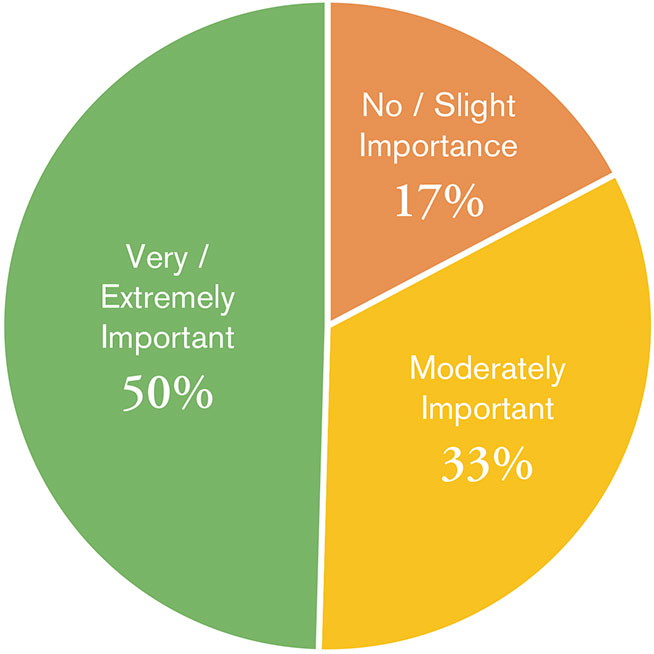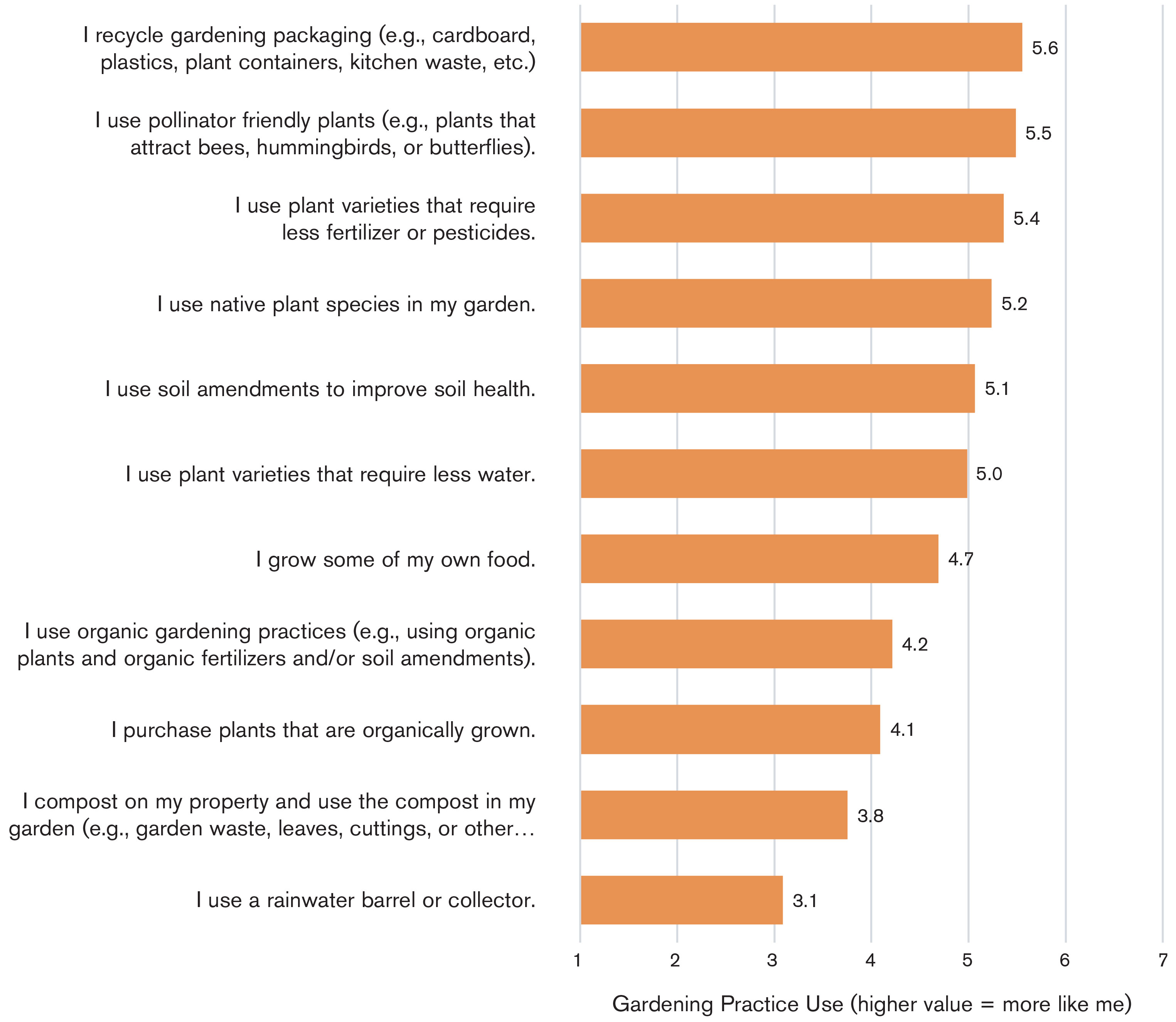
6 minute read
Cover Story
Gardening Practices of Native Plant Purchasers
By Dr. Alicia Rihn, University of Tennessee, Assistant Professor, Agricultural & Resource Economics Department
Dr. Bridget Behe, Michigan State University (retired)
Dr. Susan Barton, University of Delaware, Professor, Department of Plant and Soil Sciences
and Dr. Ariana Torres, Purdue University, Associate Professor, Department of Horticulture and Landscape Architecture and Department of Agricultural Economics
There is a lot of buzz about native plants. Many factors contribute to this increased attention including heightened demand by customers. But what is the motivation behind this enhanced interest? How do customers view native plants? Are there differences in customer behavior that can be associated with these perceptions? Understanding how customers view products is important because perceptions influence behavior. If alignments occur between communications with the customer (e.g., promotions, informational signage, etc.) and customer perceptions of the item/service, then sales are more likely to occur. The first step in better understanding the drivers of consumer behavior is to assess the current practices of consumers to establish a foundation of understanding. This article summarizes a 2023 online survey of 2,066 U.S. homeowners that assessed the relationship between the customer’s perceived importance of incorporating native plants into residential landscapes and what they describe as their current gardening practices.

We identified distinct customer segments based on their perceived importance of native plants. Fifty percent of the sample reported that incorporating native plants into their landscapes/gardens was very or extremely important, to them. About 33% indicated that incorporating native plants was moderately important, and 17% indicate that this objective was only slightly or not important to them (Figure 1). On average participants were 57 years old; 77% were female, 46% had obtained a bachelor’s degree or higher, 42% lived in rural areas, 45% lived in suburban areas, and 13% lived in urban areas. The sample of surveyed respondents was selected to provide equal representation across the 5 U.S. regions (20% per region – Northeast, Midwest, Southwest, Northwest, and South) to account for regional differences related to native plants.

Participants self-reported their use of different environmentally focused gardening practices. They rated the listed practices on a 7-point scale, where “1” corresponded to not at all like me, and “7” equaled exactly like me (Figure 2). Among respondents, their top-rated gardening practice was recycling gardening packaging (rating 5.6), followed by using pollinator friendly plants (rating 5.5), using low fertilizer and pesticide varieties (rated 5.4), using native plants (rating 5.2), using soil amendments (rating 5.1), and using low irrigation varieties (rating 5.0). Intermediate ratings were captured for growing some of one’s own food (rating 4.7), using organic gardening practices (rating 4.2), purchasing organic plants (rating 4.1), and composting on property (rating 3.8). Participants self-reported their limited participation in collecting rainwater (rating 3.1).

When results were evaluated as a function of participants’ self-reported perceptions of importance to them about native plants, clear differences are observed (Figure 3). Participants who perceived that incorporating native plants was “very-to-extremely” important rated all of the gardening practices as more characteristic for themselves than other groups that reported either “moderate” importance or “slight-to-no” importance in native plant use. Within the “veryto-extremely” important native plant users, their highest rated gardening practices were using pollinator friendly plants or native plants (rating 6.0), recycling gardening packaging (rating 5.9), using varieties that require less fertilizer or pesticides (rating 5.8), using varieties that require less irrigation (rating 5.4), and using soil amendments (rating 5.4). The segment that viewed incorporating native plants as moderately important rated the gardening practices at an intermediate level. Within this group, their top-rated gardening practices included recycling gardening packaging (rating 5.4), using pollinator friendly plants (rating 5.3), using plant varieties that require less fertilizer or pesticides (rating 5.2), and using soil amendments (rating 5.0). Lastly, the segment who rated native plants as low or not important in their landscape plant usage rated recycling gardening packaging the highest (rating 4.8), followed by using plant varieties requiring less fertilizer or pesticides (rating 4.6), using pollinator friendly plants (rating 4.5), using soil amendments (rating 4.3), and using plant varieties that use less water (rating 4.2).

Table 1 shows the relationship between the gardening practices and native plant user segments. Among the native plants as very/extremely important segment, probability increased for using native plants (by 11.2%), pollinator friendly plants (by 5.1%), plant varieties requiring less water (by 2.6%), organic gardening practices (by 2.2%), composting (by 1.3%), recycling packaging (by 1.3%), and rainwater barrels or collectors (by 1.1%).

Midwest participants were 9.0% less likely to be represented within this group. For the native plant use as moderately important segment, being in the Midwest increase their probability of being in this group by 4.6%. Conversely, all of the other practices decreased their probability of being in this segment by varying degrees. Similar trends to the moderately important segment were observed for the no/slight importance segment

Results from this study and knowledge gained about consumers helps define gardening practices used by individuals who view native plants as an important part of their landscape design and plantings. Perceived importance of native plants is partially driven by participation in eco-friendly gardening practices. This behavior may stem from internal drivers and motivations that are related to increased awareness of environmental issues. There is an opportunity to implement promotional messaging that aligns these two topics and encourage customers to select plants that align with their desires and landscaping needs. For example, adding native plant signage and positioning garden center native plant displays near eco-friendly gardening merchandise and plants may be a way to encourage crossselling behavior among native plant purchasers. Of note, across the customer segments, pollinator friendly plants were deemed important, meaning that the use of point-of-sale information to inform customers about plants that benefit pollinators is one way to encourage purchasing behavior. Lastly, signage is also imperative to aid customers in identifying native plants and their benefits in the retail environment.
Acknowledgements: This research was supported by a grant from the Horticultural Research Institute (HRI). Its contents are solely the responsibility of the authors and do not necessarily represent the views of HRI.
Full citation: Rihn, A.L., B.K. Behe, S. Barton, and A. Torres. 2023. Greater appeal of native plants for environmentally conscious consumers. Journal of Environmental Horticulture, 41(1): 7-13. https:// doi.org/10.24266/2573-5586-41.1.7





